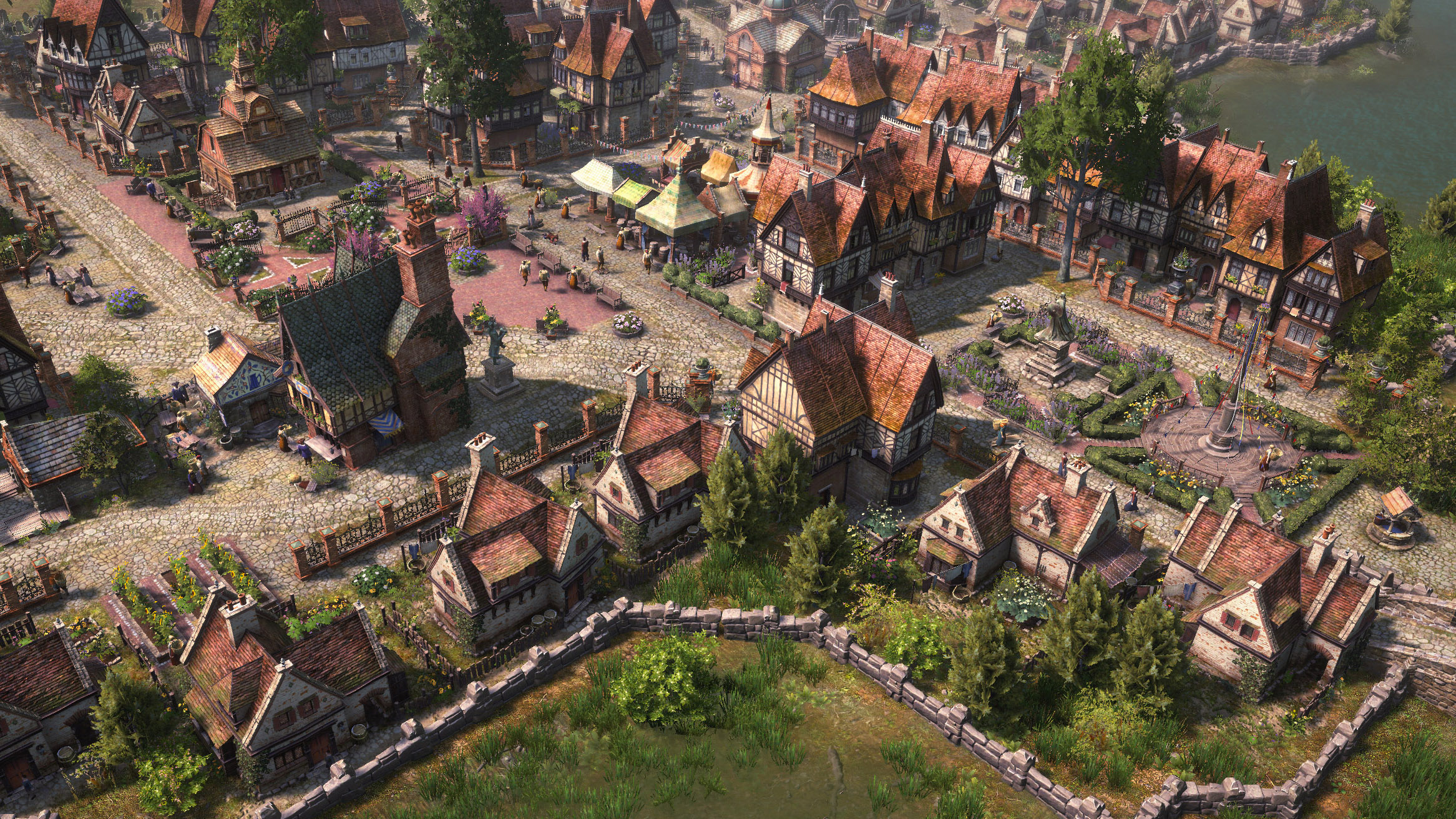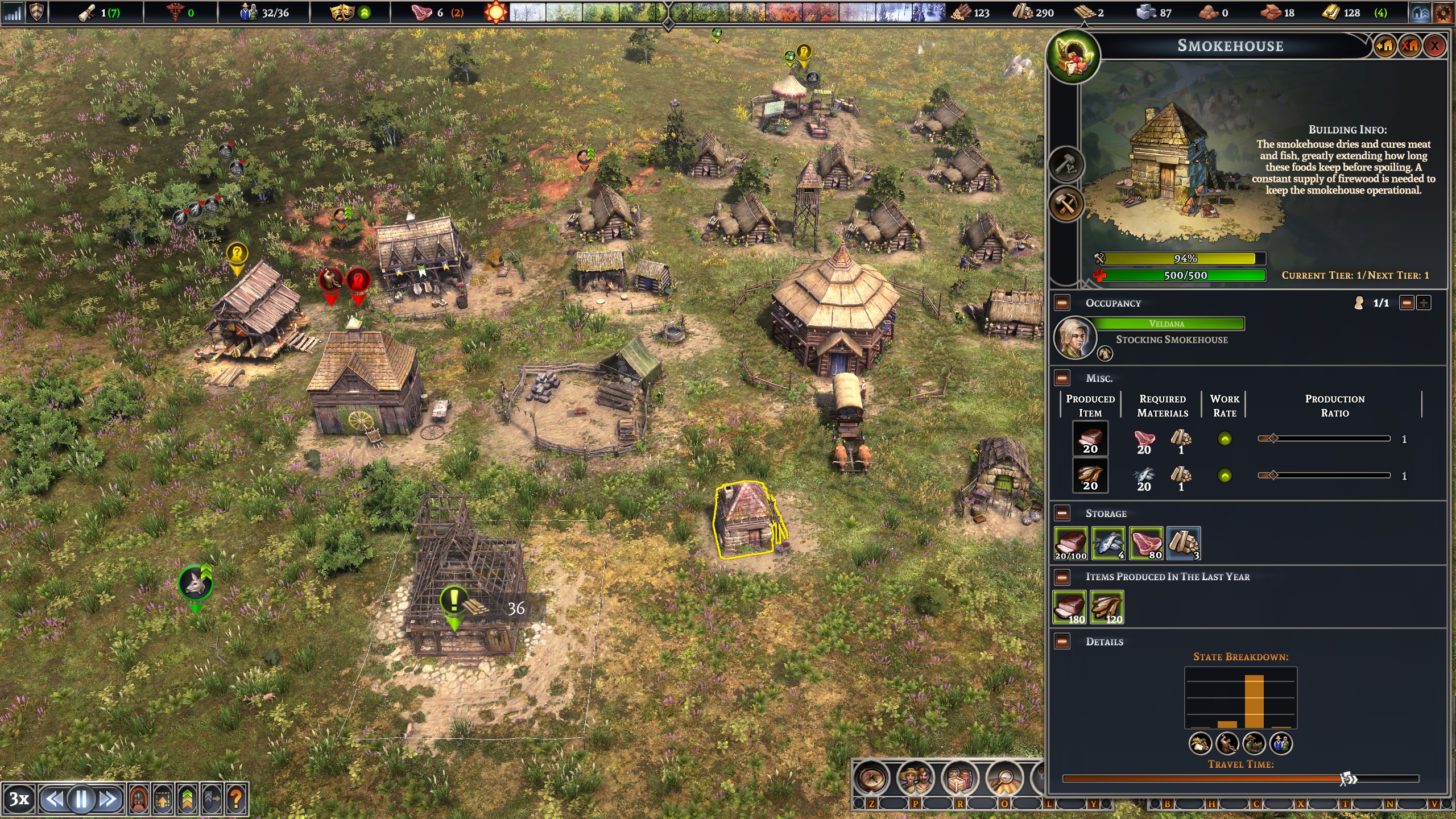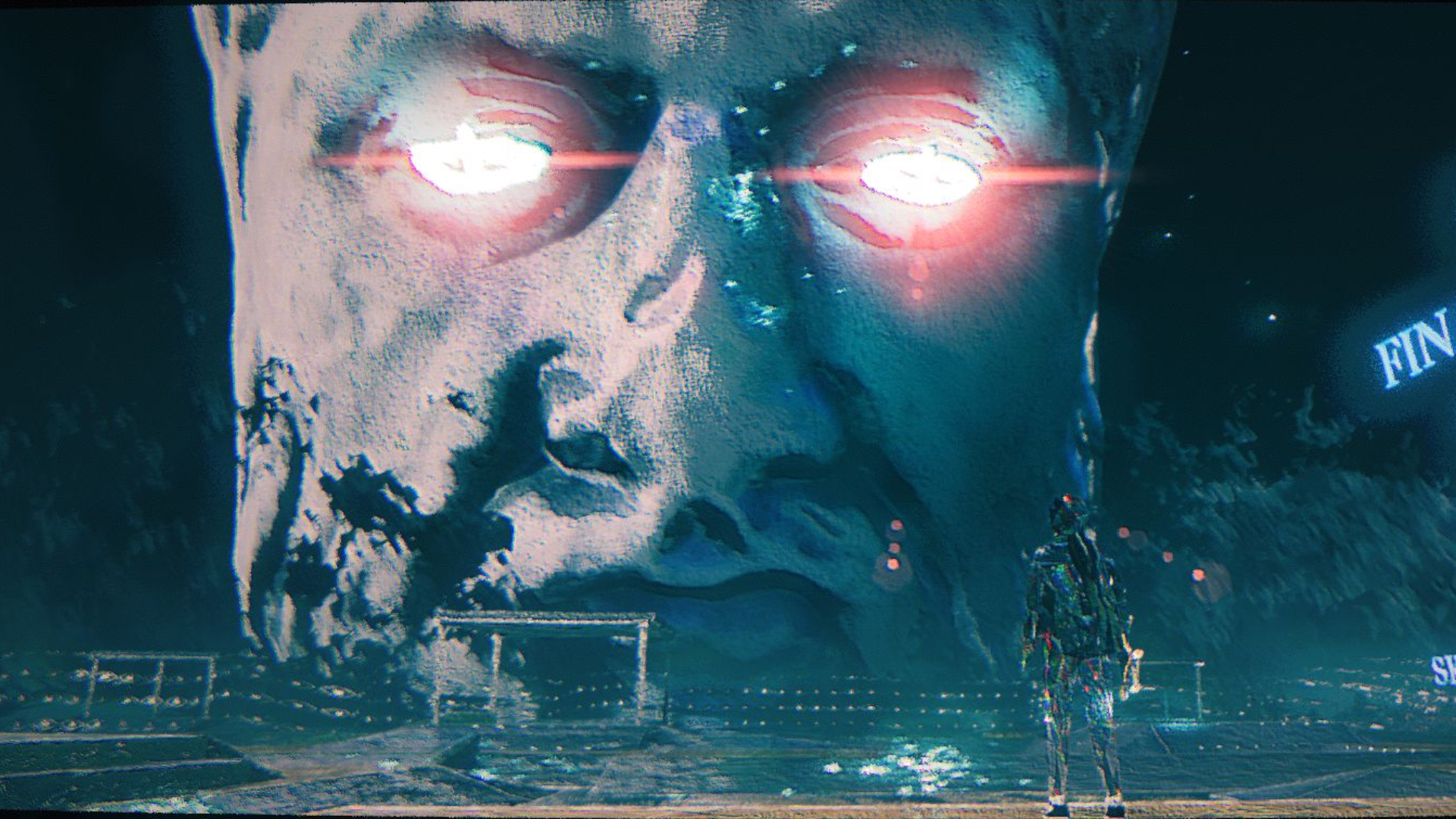Our Verdict
An engrossing survival city builder with intricate production and farming systems.
PC Gamer's got your back
What is it? A medieval survival city builder from the creators of Grim Dawn
Release date: Oct 23, 2025
Expect to pay: $35/£30
Developer: Crate Entertainment
Publisher: Crate Entertainment
Reviewed on: Intel i7 9700K, RTX 4070 Ti, 16GB RAM
Steam Deck: Playable
Link: Official site
Priorities. That's what managing a medieval city is all about. Farms are important for long-term survival, but fishing and gathering makes more sense if people need food quickly. Chopping logs into planks means construction on new buildings can commence, but if people are freezing in their homes, that timber should be turned into firewood instead.
And assigning laborers to salvage nearby ruins for resources should be put on hold if—and here's just one quick example—a giant angry bear is rampaging through the town brutally mauling everybody to death. Yeah, a murder-bear can shuffle a city's priorities real fast. Forget fishing and firewood: every single citizen's job right now is to find something sharp and become an expert bear-stabber.
Ravenous wildlife is just one of the many, many dangers you face in survival city builder Farthest Frontier, where famines, heatwaves, diseases, fires, bandit attacks, and even bee stings can send your settlers to an early grave. (New priority: build a graveyard. A big one.)
But Crate Entertainment's city builder isn't all catastrophes and crises, it's also a deep and intricate management sim about ushering your settlers from the early days of poverty and dirt roads into economic stability and (bear-free) cobblestone streets.
Town halls
The first year of Farthest Frontier feels like walking on a knife's edge. It's all about preparing for the harsh winter: building enough homes but not so many that you're wasting wood and labor, stockpiling enough food but not so much that it'll spoil, directing scouts to explore the map for resources but not straying so far you find a bandit camp or a wolf den, because you absolutely cannot risk combat at the start of the game. You have very few citizens, almost no food, and losing a single settler to animal attack or accident is a major setback.
Over the next few years that tension gives way to, well, a bit of boredom. The early game of Farthest Frontier is one of slow expansion, maybe a bit too slow: with only a handful of settlers, waiting for trees to be chopped down or for hunters to kill deer, there's just not much to do but lean on the fast-forward button and sit there watching. Advancement to anything beyond basic production is locked behind milestones like population growth, and that can take a while.
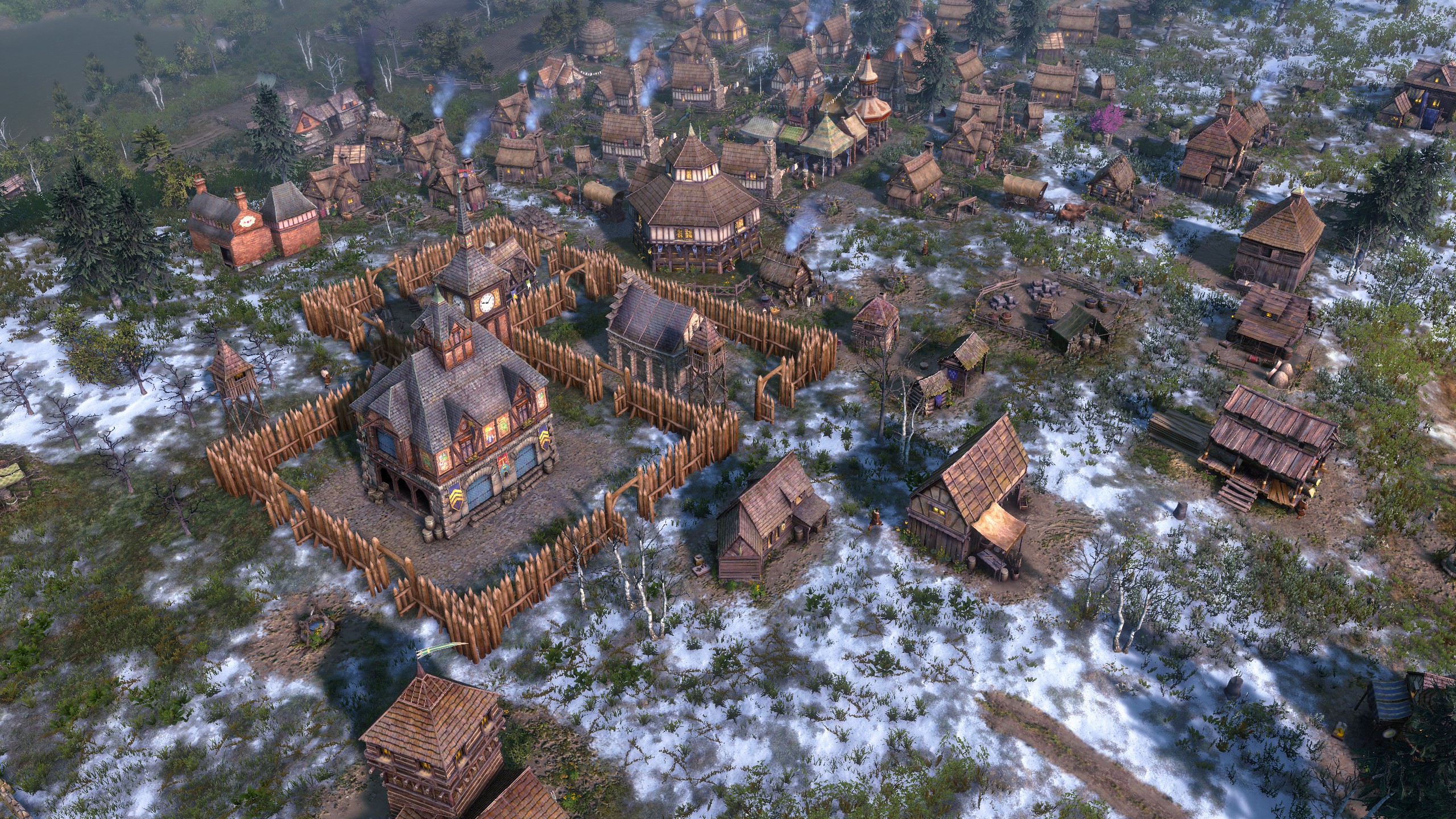
But things pick up quickly once you reach the second tier and more of the game's nearly 200 different buildings become available. A lot of the mid-game fun comes from choosing a specialty for your city, a direction to throw your efforts into. In one city I majored in bees, mass-producing honey from apiaries scattered throughout my town, which was like liquid gold because I could turn it into beer and medicine and sell it to traveling vendors.
Keep up to date with the most important stories and the best deals, as picked by the PC Gamer team.
Radiant raids
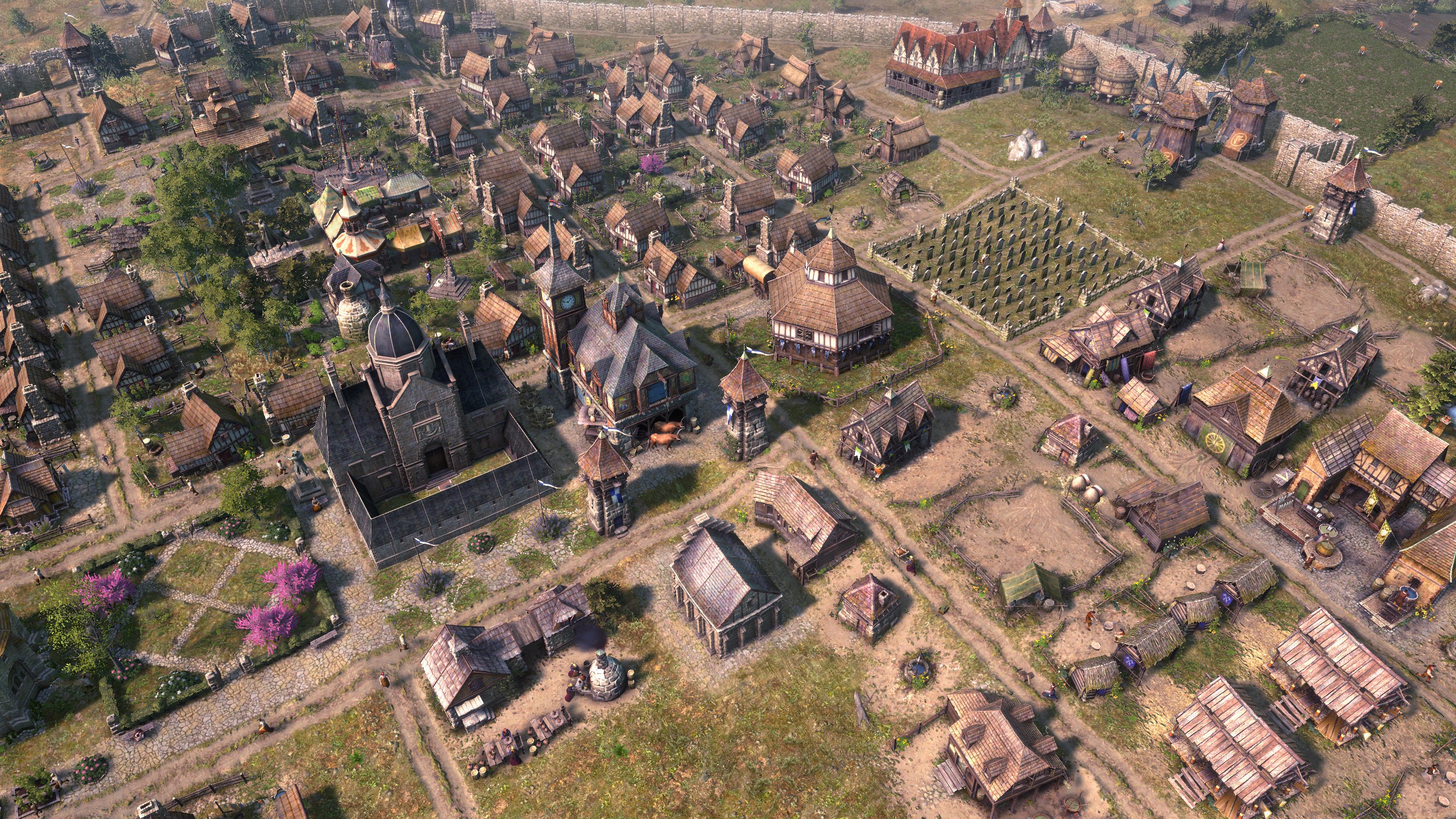
In my most recent city my scouts discovered something better than liquid gold: actual gold. The procedural map generation gods smiled upon me by placing several gold deposits just outside my city. Who needs to tax citizens or sell products to merchants when I can literally mine and mint my own money? I couldn't see the expressions on my citizens' faces, but I bet they were excited that their lives, and their children's lives, would be spent working in the mines.
My goldlust was swiftly punished, though, because I hastily built my gold mines long before I had built just about anything else, like adequate defenses for my now-wealthy city. It wasn't long until bandits poured from the trees and raided my town, making off with more gold than I would have thought could fit in their pockets.
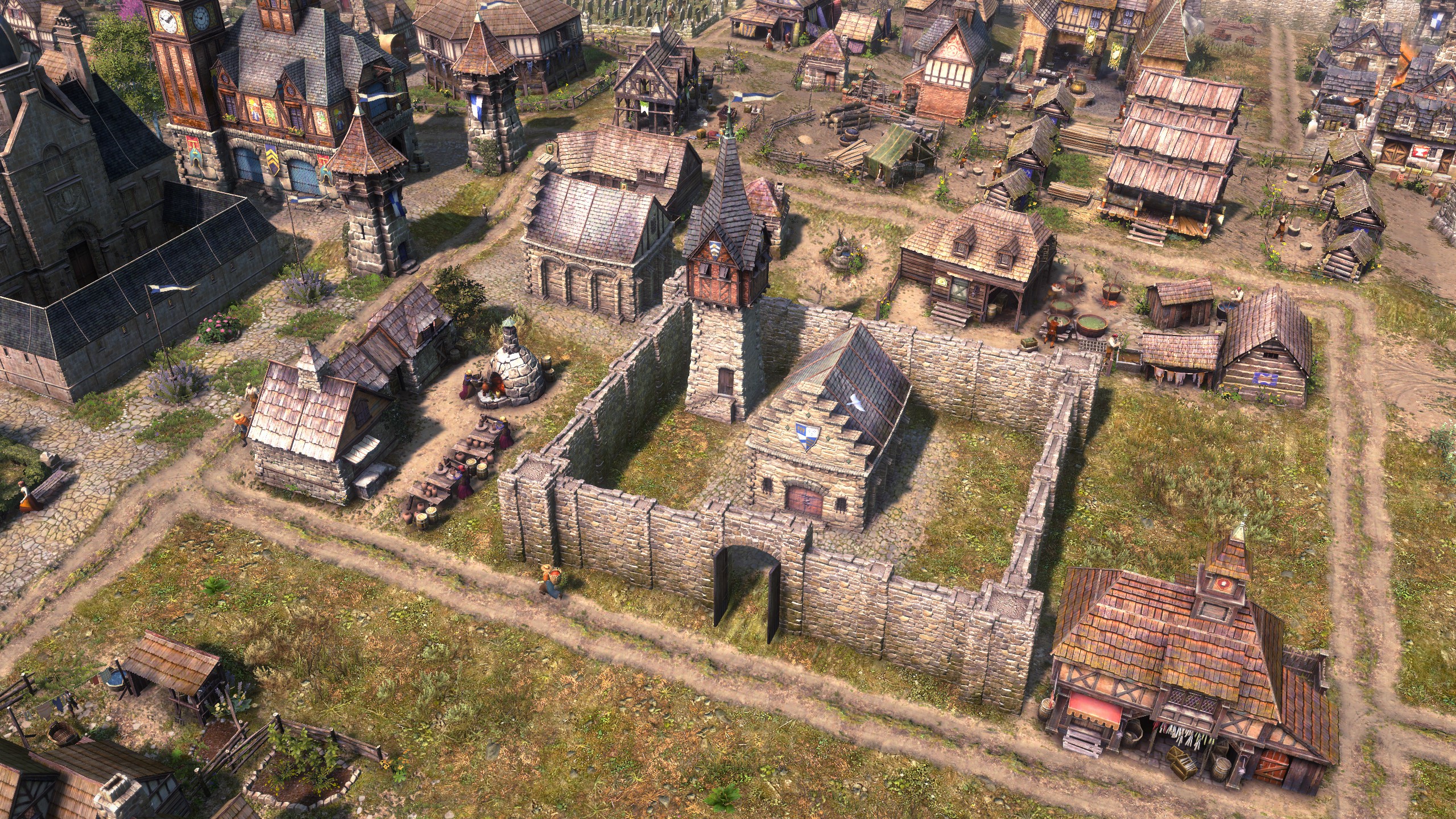
I know the raid system is probably just the game checking my city for valuables and flipping the "bandit" toggle to "on" when it sees I have something worth stealing, but the raids in Farthest Frontier feel surgically timed. One raid came while most of my town was busy fighting a fire (I'd like to think it was set by a bandit as a diversion), and another came just after I'd transferred all of my gold from my vault, a stone building surrounded with stone walls, to my trading depot, a wooden building surrounded with nothing.
After I'd built walls around my trading post, the next raid hit my foundry: the place I melt gold ore into bars. Now I've gotta build walls around that, too, and maybe actually invest in a few guard towers and a cavalry. Good news, miners, some of you can now put down your pickaxes and spend your lives fighting brigands to the death. My citizens must love me.
Crop circles
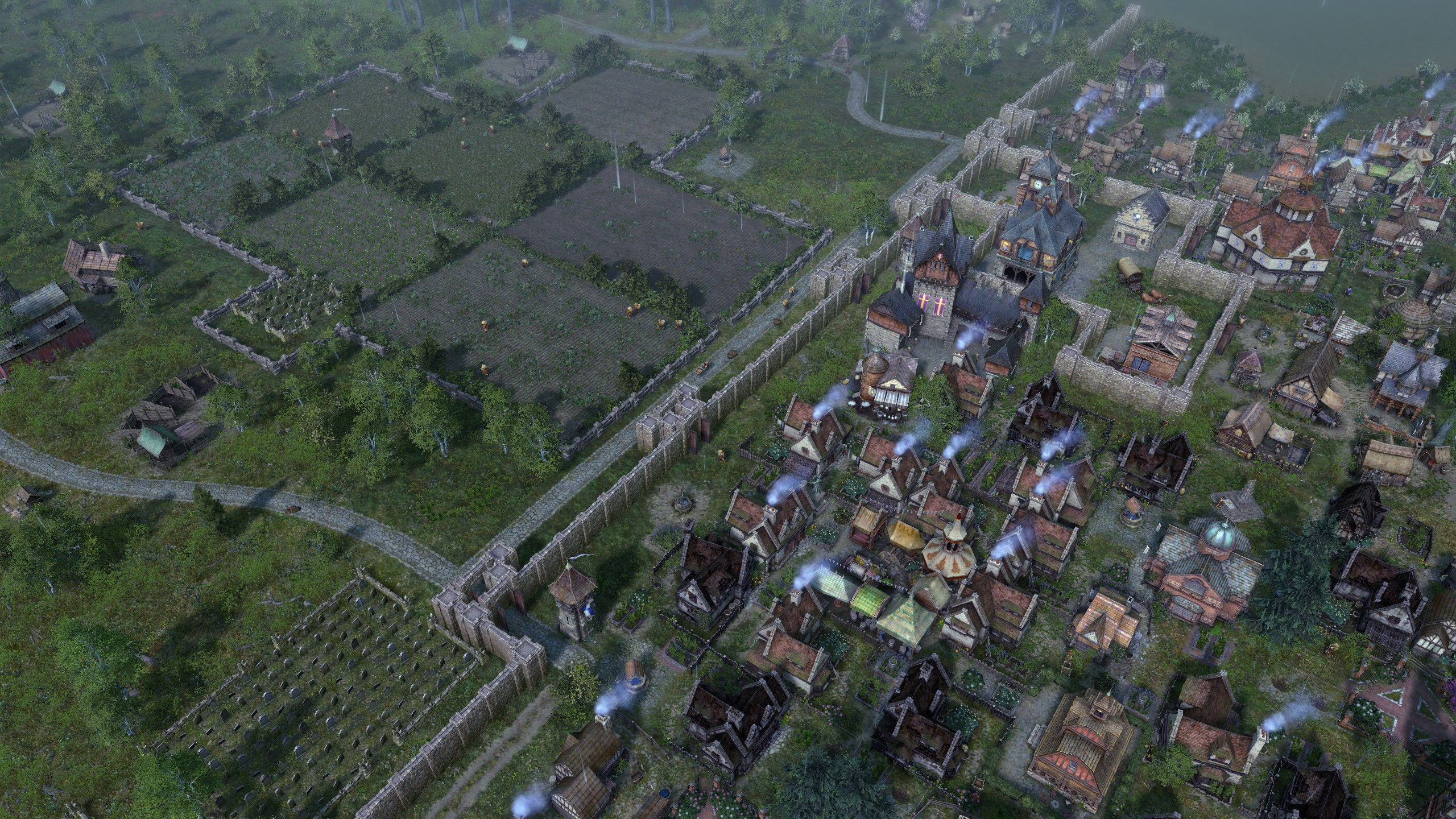
One of the most engrossing parts of Farthest Frontier are the production chains. I decided to focus heavily on orchards to produce fruit: making people happy means giving them more than just deer jerky and berries to eat. It seemed simple enough: build an arborist building, wait for trees to grow, harvest the fruit, profit. A problem eventually became apparent: fruit rots way faster than other crops, so it wasn't really paying off.
No problem: I'll just turn some of the fruit into preserves. How hard could that be? Well, I needed to build a glassmaker to create the glass jars, which required a sandpit to collect sand to make the glass, but also needed heavy tools to construct the actual production building. To produce heavy tools meant building a blacksmith's forge, which required iron bars, which meant building a foundry, which needed ore, which needed a mine, which needed… hey soldiers, put down those swords and grab those pickaxes! You're miners again!
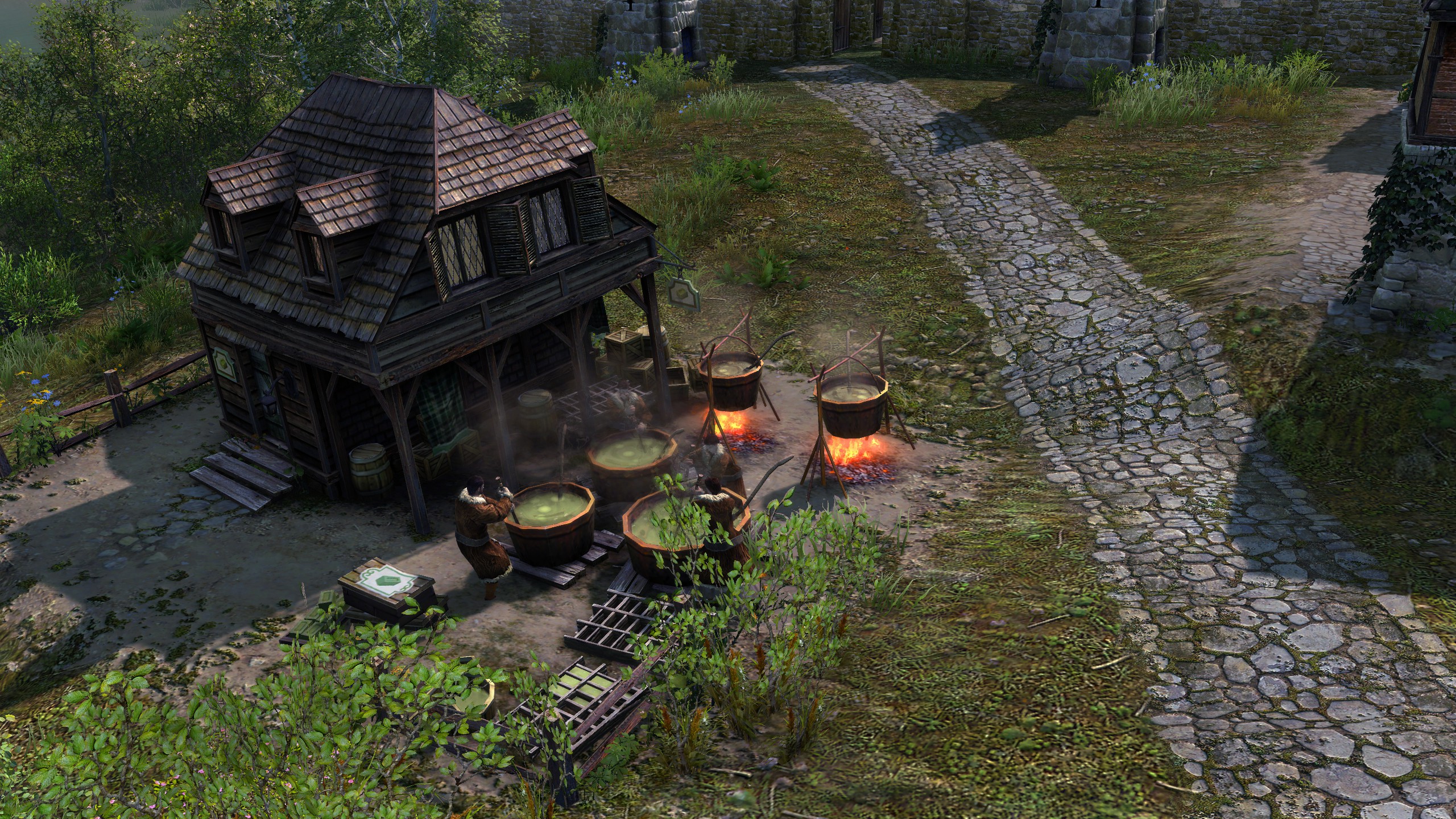
It took years—years—to accomplish all that, all so I can turn peaches into peach jam. But there's a ton of satisfaction in finally completing that sort of project, setting up the production chains, making space in my city for the buildings, and attracting enough new residents to perform all that labor without gutting all my other little industries.
It's fun just to sit back for a bit and watch everything moving around the city.
You can watch those production chains in real time because all those resources and products exist in the world, not just as numbers in a ledger. Got a merchant at your trading post interested in buying smoked fish?
It doesn't happen by magic: someone's gotta get a wheelbarrow or cart, load it up with fish, and take it from the storehouse to the trading post. It may be tempting to fire all your soldiers until there's a military emergency, but you can't instantly put them back on duty: they'll have to physically walk from wherever they are to collect weapons and put on armor before they can stand post again. It's fun just to sit back for a bit and watch everything moving around the city, to see the place you've built really function.
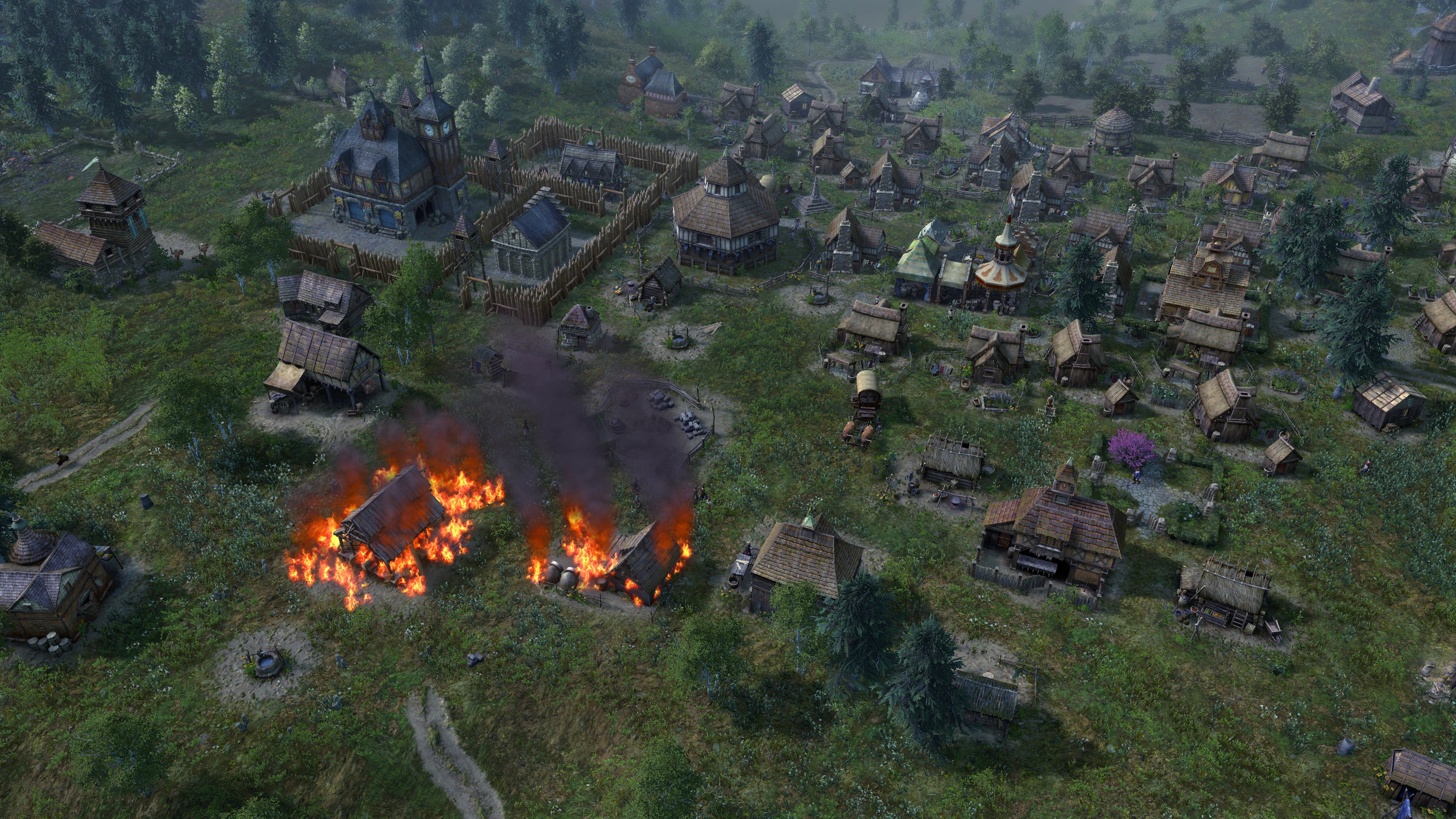
Farming is another complex delight. Whenever I begin a new city, I'm really just killing time until I've got a big enough population that I can turn about 20 people into farmers. If you've ever wanted to ignore your entire city while you obsess over optimal crop rotation and spoilage rates, tinker with the clay and sand mixture of your soil, monitor weed levels and frost tolerance, and make dramatic pronouncements out loud like "Screw turnips, this year we're going all-in on leeks!" then this is your game.
There's enough variety that each of my cities feels like it has its own distinct storyline and history.
Similarly to how the early game feels a bit sluggish, once my city hits about 500 residents and the economy stabilizes, the pace slows back down and I get restless for a new challenge. Farthest Frontier supports cities of thousands of people (if your hardware is powerful enough) but I've never felt the urge to sprawl quite that much. I wouldn't say I get bored, exactly, but presiding over a smoothly-running city isn't quite as engrossing as building that city up from nothing.
Farthest Frontier has a lot of what I look for in a survival city builder: intricate production and farming systems, tough challenges balanced with chill moments, and plenty of customization (you can turn off bandit raids, hostile wildlife, and even diseases if you want a more peaceful experience). There's also enough variety that each of my cities (I'm on my third now) feels like it has its own distinct storyline and history. I built Bee City and Gold Gulch, and I can't wait to see my new town's identity develop… provided my settlers survive the next bear attack.
An engrossing survival city builder with intricate production and farming systems.

Chris started playing PC games in the 1980s, started writing about them in the early 2000s, and (finally) started getting paid to write about them in the late 2000s. Following a few years as a regular freelancer, PC Gamer hired him in 2014, probably so he'd stop emailing them asking for more work. Chris has a love-hate relationship with survival games and an unhealthy fascination with the inner lives of NPCs. He's also a fan of offbeat simulation games, mods, and ignoring storylines in RPGs so he can make up his own.
You must confirm your public display name before commenting
Please logout and then login again, you will then be prompted to enter your display name.
